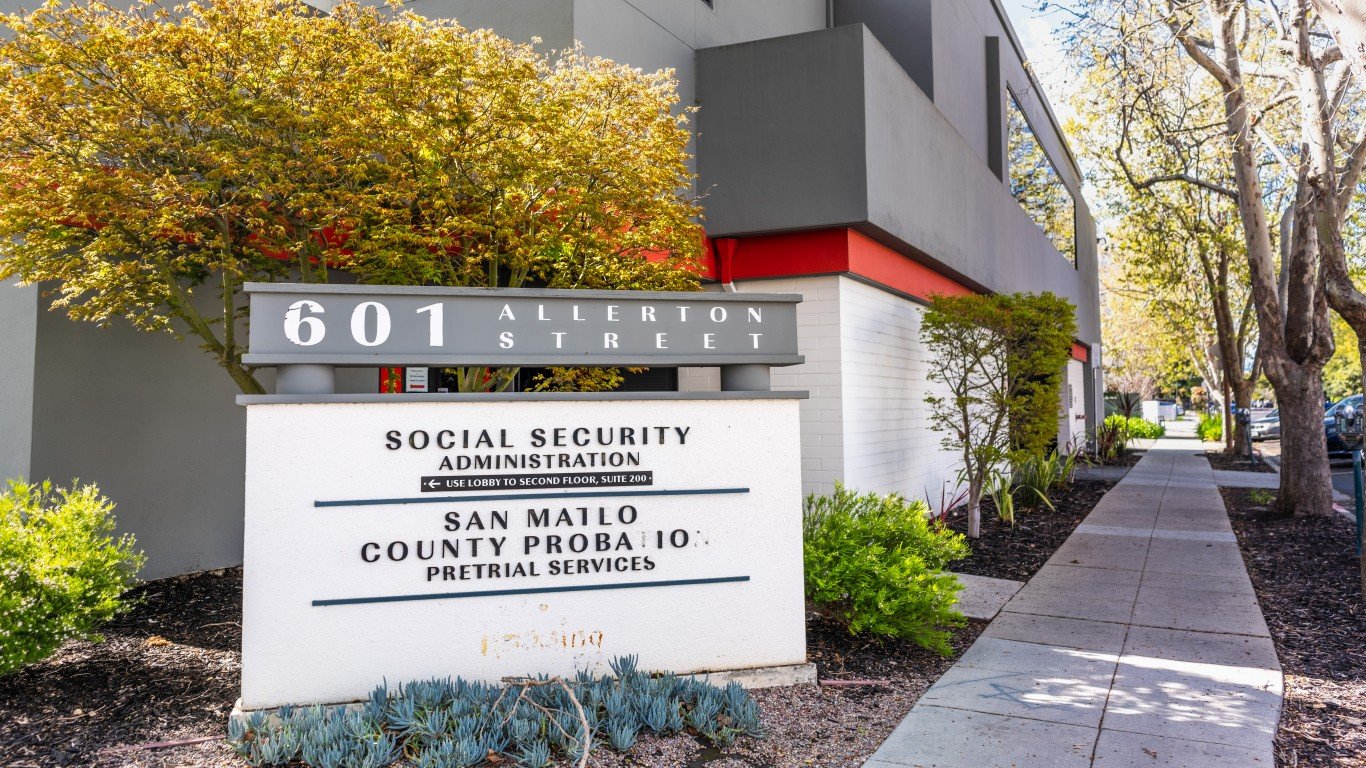

Social Security faces a potential funding shortfall by 2033-2035, threatening its ability to meet commitments to retirees. A significant issue is the payroll tax cap, which limits taxation to incomes up to $168,000. This cap hasn’t kept pace with the rise in high earners, contributing to the shortfall. Removing the cap could address 70% of the deficit. While raising the retirement age or increasing taxes are other options, the political feasibility of taxing higher incomes makes it a likely solution. Retirees are advised to continue investing in their retirement accounts to supplement Social Security benefits.
Transcript:
Eric, we’ve talked about the crunch that Social Security finds itself in.
And the bottom line is that government projections have Social Security running dry by 2033 if nothing changes.
Whether it’s 2033 or 2035, we’ve seen a couple of different estimates, but that range right there, that two-year range seems to be universally agreed upon as the point where Social Security will not be able to meet the commitments that it has made to seniors.
And that’s pretty scary.
So this long-term outlook, it’s grim, but you wanted to highlight one specific problem that’s impacting the future of Social Security benefits. What is it?
Yeah, there are, of course, a number of problems with how Social Security is funded right now.
People are living longer, which is a good thing, right? It also means they’re collecting more than past projections.
And another problem is demographics. People are having fewer children, which means fewer taxpayers to support Social Security.
However, one of the greatest challenges continues to be inequality. And I don’t want this to be a political debate. I just want to present the numbers behind it.
Because it’s not what was anticipated when Social Security was last overhauled, and it’s going to really have an effect on how Social Security needs to change in the future.
So the big problem with Social Security funding is the payroll tax, which is 6.2% on the employee side and 6.2% on the employer side.
But this tax only goes up to an income of $168,000 as of 2024. So wages beyond that level, they’re not taxed for Social Security purposes.
Now here’s the problem in exact numbers. When Social Security amendments were last passed in 1983, that was kind of the attempt to reform it to make it viable for the long run, only 9% of earners exceeded this high watermark for Social Security taxes.
But according to the Social Security Administration’s chief actuary, this percentage is now 17.9%. So we go from 9.1 to 17.9%. As you can see, that’s nearly a doubling of people that are going over this limit.
The key here is that the average wage growth is being driven by high earners. Some would call it a billionaire problem. The median wage growth, which measures the 50th percentile wages, just hasn’t been keeping pace.
So estimates are that removing this cap, if you just want that to be the solution, would close 70% of the Social Security shortfall.
And to be sure, there are other tactics Congress has at its disposal. But if you’re a politician, you need to think about it from their perspective.
You have multiple decisions, one of which could be raising ages for benefits or raising a tax that predominantly impacts high earners. Well, I don’t need to tell you what decision is more likely in their shoes.
So if you’re still working, this is one of the most likely areas that your taxes could be increasing.
And keep in mind, that’s a tax you see and also a tax your employer, which is kind of an indirect way of increasing your taxes.
Currently, this level is once again 12.4%. But if it were to increase to 16%, even not affecting a cap, that could close the shortfall as well.
So I would look for this being one of the most contentious areas around Social Security reform in the coming years.
Yeah, you know, contentious and challenging. I mean, as you said yourself, we tried to address this problem in 1983.
But the world changes and people’s earning profiles change and demographics change.
And what we’ve also seen is that even if you raise this tax, we do know that the wealthiest 1% of individuals who accrue the most assets over their lifetime tend to accrue it from equity, which is not income.
So there’s this whole cat and mouse game here. It can be quite challenging.
Of course, we’re going to be paying attention to this. Seniors need to watch this.
But our big takeaway has consistently been that seniors should, to whatever extent possible, control their own destiny here by funding their own retirement accounts with whatever they have available.
Every dollar today goes really far in retirement. And while Social Security is a wonderful safety net, it is only a safety net and it might not be sufficient for most people’s situation.
So we do encourage people to pay attention to this, but also to invest for their own retirement just in case.
Take This Retirement Quiz To Get Matched With An Advisor Now (Sponsored)
Are you ready for retirement? Planning for retirement can be overwhelming, that’s why it could be a good idea to speak to a fiduciary financial advisor about your goals today.
Start by taking this retirement quiz right here from SmartAsset that will match you with up to 3 financial advisors that serve your area and beyond in 5 minutes. Smart Asset is now matching over 50,000 people a month.
Click here now to get started.
Thank you for reading! Have some feedback for us?
Contact the 24/7 Wall St. editorial team.



